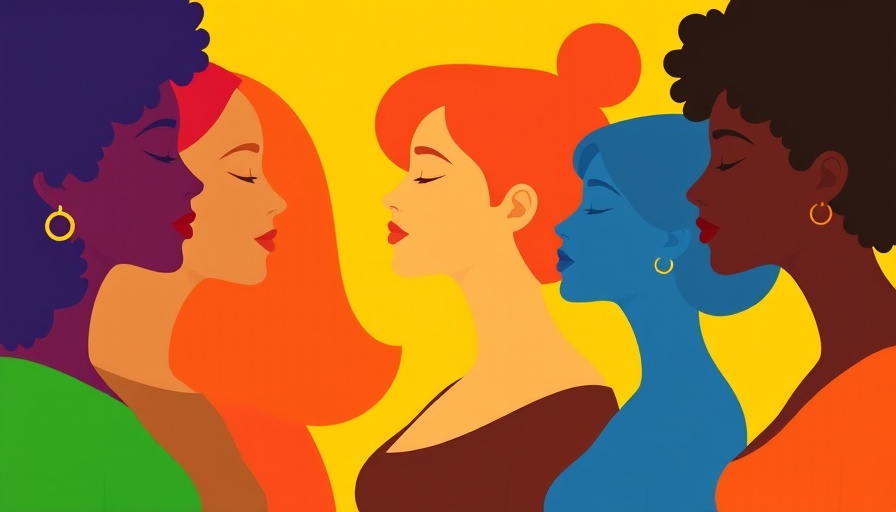
Empowering Change: Unveiling 10 Women Driving the Mindfulness Movement in 2025
As we step into 2025, the mindfulness movement is being profoundly shaped by the courageous and transformative work of women leaders around the world. These ten women exemplify the resilience and power of the human spirit, showcasing how mindfulness techniques and practices can not only heal individuals but also inspire communities to greater compassion and clarity.
Embracing Vulnerability for Healing
Brenda K. Mitchell, a prominent pastor and activist, highlights the importance of embracing our brokenness. After experiencing the profound loss of her son to gun violence, Brenda learned that healing begins by recognizing and prioritizing one’s own needs amidst devastation. Her journey into mindfulness revealed the "power of the pause"—a crucial reminder that taking time to breathe and reflect can lead to deeper self-acceptance and healing. Her practice not only empowers her healing but also enables her to guide other trauma survivors in their paths toward recovery.
A Unique Approach to Mindfulness
Shelly Harrell’s perspective reveals the necessity of recognizing diverse cultural experiences within the mindfulness community. She questions the often Eurocentric frameworks of mindfulness and instead emphasizes communal connections over individual detachment. By founding The Soulfulness Center, she promotes a model centered on love and liberation, vital for embracing those in collective communities. Shelly’s work reinforces how mindfulness must evolve to address the specific challenges of diverse populations, enriching the overall discourse on well-being.
Mindfulness in the Classroom: Founding Peace in Schools
Caverly Morgan, founder of Peace in Schools, believes that mindfulness is not only a personal journey but also a communal one that encompasses education. In her teachings, she helps students navigate the presence of their 'Inner Critic' without the prescriptive expectation to change it. Instead, she encourages embracing this inner voice with compassion, allowing students to grow from their experiences rather than retreat behind negativity. By sharing these tools with the younger generation, Caverly fosters resilience and self-acceptance among students.
Celebrating Differences and Building Inclusive Practices
Sue Hutton's advocacy for individuals with neurodevelopmental disabilities exemplifies how mindfulness practices can inclusively celebrate individual differences. By creating adaptive mindfulness curriculums, Sue addresses the unique experiences of neurodivergent persons within the mindfulness space. She highlights the importance of self-compassion within mindfulness, emphasizing that each person's meditative experience is colored by their own brain's wiring. In taking these important actions, Sue pushes for mindful inclusivity in all community practices, reinforcing the significance of tailored approaches.
Redefining Mental Wellness Through Mindfulness
Melli O’Brien’s story illustrates the deep connection between personal healing and the desire to help others. Faced with her struggles with depression and an eating disorder, she found solace in mindfulness practices that afforded her clarity and freedom from mental constraints. After years of teaching mindfulness, she went through burnout, prompting her to create ‘The Deep Resilience Method.’ This new avenue of her practice acknowledges that to serve others effectively, one must first care for their own well-being, emphasizing a cycle of self-care that extends outward.
The Science of Mindfulness in Mental Health
S. Helen Ma, a clinical psychologist, has contributed significantly to mindfulness research, particularly regarding its application in clinical depression treatment. Her pioneering work demonstrates how mindfulness can prevent relapse in individuals who struggle with chronic depression, showcasing the intersection of academic rigor and compassionate practice. She advocates for body awareness, reinforcing the necessity of being present and tuning into one's physical self as a core component of mindfulness.
Innovating Mindfulness with Technology
In a digital age, Nanea Reeves bridges the gap between technology and mindfulness, founding TRIPP, which leverages virtual reality in mindfulness practices. Her approach that combines modern technology with ancient wisdom offers guided meditations tailored to personal needs. By using these innovative tools, Nanea provides a unique entry point for new practitioners seeking accessible mindfulness experiences that align with contemporary lifestyles.
Mindfulness as a Way of Life
Vidyamala Burch emphasizes the need to "hold life lightly," especially when facing chronic pain. Through her organization Breathworks, she teaches individuals how to navigate through suffering with mindfulness as a guide. Her experience reminds us of the power of compassion and self-contained acceptance of our circumstances. She advocates for mindfulness as essential not only for personal peace but also as a collective approach to global healing.
Open Hearts and New Narratives
Shalini Bahl and Yuria Celidwen emphasize the ethical dimension of mindfulness, urging leaders and practitioners to keep their hearts open. Shalini's experiences in local governance highlight how mindfulness can shape compassionate leadership. Yuria's advocacy for integrating Indigenous wisdom into the mindfulness dialogue reflects a growing recognition of the need for inclusivity. Their beliefs reinforce that mindfulness should lead to collective well-being and social responsibility.
Continuing the Journey of Mindfulness
As these ten remarkable women reveal, mindfulness is not merely a personal practice; it is a transformative tool capable of reshaping communities and fostering healing across many spheres. By integrating mindfulness into our daily lives and sharing its practices with others, we create a ripple effect of positivity, empathy, and collective growth. Their journeys serve as a reminder that through mindfulness, we can all learn to embrace our brokenness and celebrate our differences.
This year, let us take inspiration from these trailblazers and find our own unique paths in the mindfulness movement—a journey that begins with just one mindful breath.
 Add Row
Add Row  Add
Add 




Write A Comment